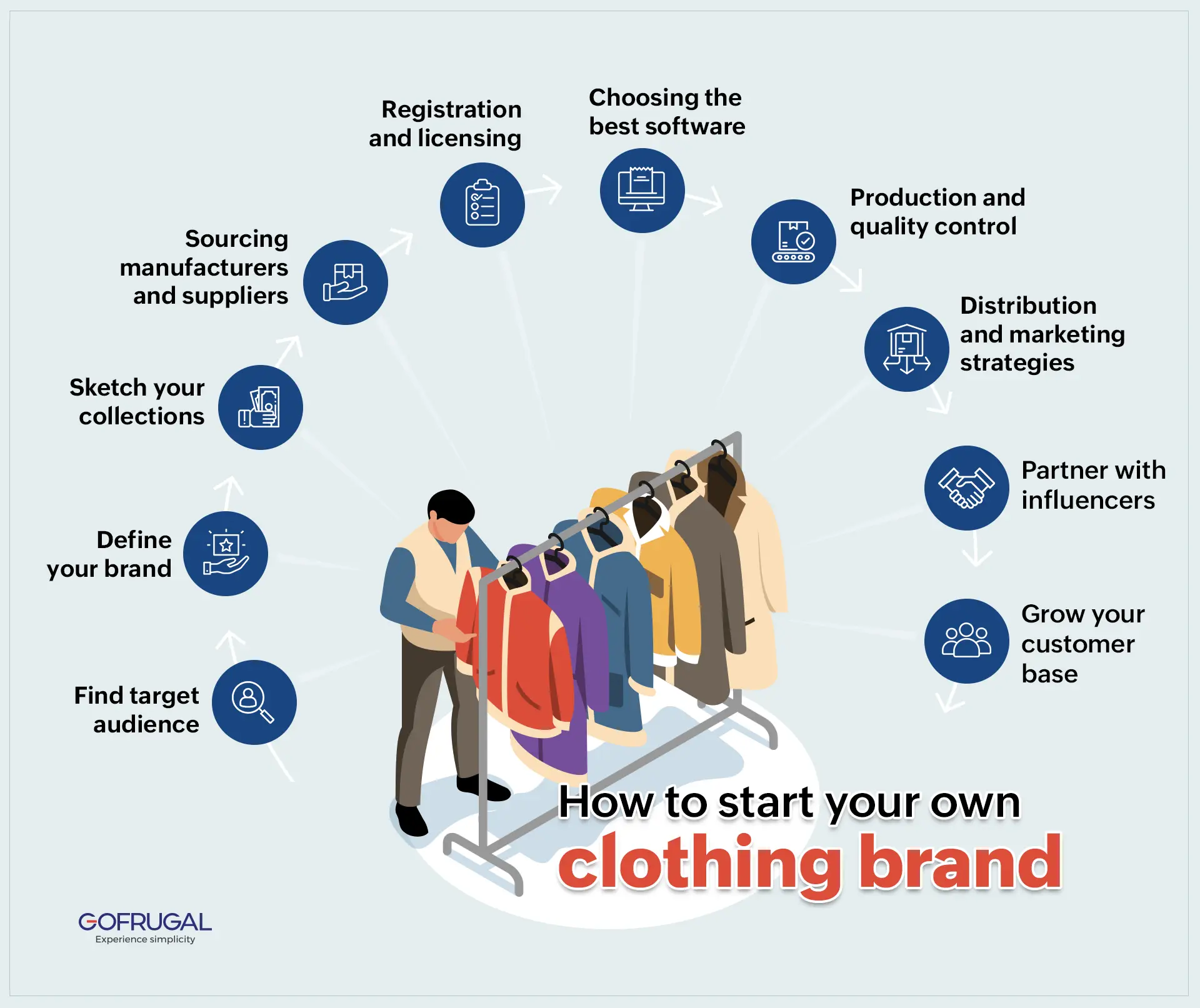The Importance of Sustainable Clothes: Just How It Influences the Atmosphere and Your Storage room
Lasting garments is progressively acknowledged for its essential role in reducing the environmental impact of the rapid style industry. By focusing on environmentally friendly materials and moral manufacturing methods, it addresses pushing ecological issues. This change not just benefits the earth however likewise affects consumer options, leading to a much more thoughtful strategy to wardrobe monitoring. Understanding these characteristics elevates vital inquiries about fashion's future and personal duty fit it.
The Ecological Footprint of Rapid Style

Advantages of Lasting Materials
Lasting products supply substantial benefits, especially with eco-friendly fabric choices that reduce environmental injury. These products also show durability and long life, decreasing the need for constant replacements. Therefore, they add to a much more lasting garment industry and advertise responsible customer behavior.
Eco-Friendly Material Selections
While the garment industry has long been connected with rapid fads and ecological harm, the increase of environment-friendly textile selections presents a transformative opportunity. Sustainable products such as natural cotton, hemp, and Tencel have obtained popularity due to their lower ecological influence. These materials are often created without hazardous pesticides and require much less water, lowering their carbon footprint - Branded Clothing. In addition, numerous green materials are naturally degradable, contributing to a circular economic situation by minimizing waste. Selecting lasting products not only supports eco responsible methods yet additionally promotes healthier ecological communities. As customers become extra knowledgeable about their buying power, the need for environmentally friendly textiles encourages brands to introduce and adopt more lasting manufacturing methods, ultimately benefiting the earth and future generations
Sturdiness and Longevity Advantages
Several consumers are progressively identifying the resilience and durability advantages of sustainable materials in their clothing choices. Unlike standard materials, sustainable products such as natural cotton, hemp, and recycled polyester are crafted to endure deterioration, causing garments that last much longer. This lowered regularity of substitute not just conserves customers cash gradually yet likewise reduces waste created by quick fashion. On top of that, sustainable apparel often employs eco-friendly manufacturing approaches that improve material strength, contributing to a decrease in the total carbon footprint. By investing in durable apparel, customers can cultivate a more lasting wardrobe while appreciating top notch items that maintain their aesthetic and performance with time. Subsequently, toughness and long life stand as crucial benefits of picking lasting products.
Minimizing Waste Through Lasting Practices
Minimizing waste in the fashion business can be accomplished via innovative techniques such as upcycling and repurposing products. Furthermore, adopting minimal closet strategies encourages consumers to prioritize top quality over quantity, ultimately reducing clothes consumption. With each other, these methods contribute significantly to an extra sustainable clothing design.
Upcycling and Repurposing Materials
Upcycling and repurposing products have actually become cutting-edge methods in the apparel industry, changing disposed of fabrics into useful new items. This method not just minimizes waste however additionally motivates creative thinking and individuality in clothing style. By taking old garments and products, designers can produce unique pieces that show individual style while decreasing the need for brand-new resources. Furthermore, upcycling commonly requires much less energy and water compared to traditional manufacturing procedures, significantly decreasing the ecological footprint of fashion. As consumers become a lot more mindful of sustainability, the appeal of upcycled clothing remains to rise, promoting a round economy. Eventually, these practices add to an extra lasting future, where fashion prioritizes ecological wellness over fast production and consumption.

Minimalist Closet Approaches
As people significantly look for to reduce their environmental influence, adopting minimal wardrobe strategies has actually gained grip as a reliable strategy to lasting style. These methods highlight high quality over quantity, encouraging consumers to curate a smaller collection of versatile, sturdy apparel. By concentrating on ageless pieces that can be mixed and matched, people can lower the frequency of purchases and eventually lower waste.Additionally, minimalism advertises mindful usage, urging shoppers to review the ethical and environmental implications of their selections. This technique not only promotes an extra sustainable way of living but likewise simplifies everyday decision-making relating to outfit. As individuals embrace minimalist principles, they add to a style culture that values sustainability and responsible consumerism, inevitably resulting in an extra eco-conscious culture.
The Function of Moral Labor in Sustainable Fashion
While many consumers are significantly knowledgeable about the environmental repercussions of their apparel choices, the significance of ethical labor practices in lasting style can not be neglected. Ethical labor includes reasonable wages, risk-free working conditions, and respect for employees' civil liberties, creating the backbone of responsible fashion production. Brand names that focus on honest labor not just boost neighborhoods however additionally established a criterion for accountability in the industry.Moreover, the integration of ethical practices promotes openness, making it possible for customers to make enlightened selections concerning their purchases. This method contrasts dramatically with fast fashion's exploitative labor versions, which typically focus on earnings over people. By sustaining companies devoted to ethical labor, consumers add to a system that values human self-respect alongside environmental sustainability. As a result, honest labor is not just an add-on; it is vital to the more comprehensive mission of sustainable fashion, making certain that the quest for eco-friendliness does not come at the expense of human legal rights.
The Effect of Sustainable Clothes on Carbon Emissions
Sustainable clothing has the possible to substantially reduce carbon discharges connected with the garment industry. Typical garment manufacturing adds notably to greenhouse gas discharges, largely as a result of energy-intensive production processes and using non-renewable sources. In contrast, lasting fashion concentrates on green materials, such as natural cotton or recycled fibers, which frequently call for less power to produce.Moreover, sustainable brands often tend to embrace more reliable manufacturing methods, lessening waste and decreasing overall exhausts. By More about the author prioritizing sturdiness and classic design, sustainable clothes encourages customers to buy much less frequently, additional reducing the carbon impact related to overconsumption.Additionally, lots of sustainable brand names are committed to transparency in their supply chains, making it possible for consumers to make educated choices that straighten with their values. Eventually, shifting in the direction of sustainable apparel can result in a considerable decrease in carbon emissions, adding to a much healthier planet and a much more lasting future for the fashion market.
Sustaining Local Economic Situations With Sustainable Selections
The shift toward lasting clothing not only addresses environmental problems but likewise substantially benefits regional economic situations. By choosing sustainable fashion, customers typically sustain local craftsmens and small companies, enhancing neighborhood durability. These ventures usually operate on a smaller range, focusing on workmanship and moral practices over mass production.Investing in locally made lasting apparel promotes work production and boosts financial growth within communities. As consumers become much more familiar with the environmental impact of their purchases, they significantly seek products that reflect their values. This demand encourages local manufacturers to take on lasting practices, adding to a round economy.Moreover, supporting neighborhood organizations reduces transport discharges, lining up with eco-conscious consumer behavior. The interconnectedness of sustainable clothing and read this article neighborhood economies emphasizes the essential role that private selections play in advertising both economic and environmental wellness. By promoting these local links, neighborhoods can thrive while also functioning towards a more lasting future.
Transforming Your Storage Room: Tips for a Sustainable Closet
As individuals look for to minimize their environmental impact, changing a closet right into a sustainable closet comes to be an essential action. One efficient strategy is to examine existing garments, keeping only things that are used frequently and that line up with sustainability objectives. Prioritizing top quality over amount is important; buying long lasting pieces from environmentally friendly brand names can significantly reduce waste.Additionally, integrating used products can rejuvenate a wardrobe while decreasing ecological damage. Organizing garments swaps with buddies or giving away unused items can even more advertise sustainability.When shopping, individuals must look for materials that are natural, recycled, or naturally degradable, and stay clear of fast fashion retailers - Branded Clothing. Finally, practicing conscious consumption by thoughtfully taking into consideration each purchase can add to a more sustainable way of life. By implementing these suggestions, one can produce a closet that reflects individual design while sustaining ecological stewardship
Regularly Asked Questions
Exactly How Can I Determine Lasting Garments Brands?
To determine lasting garments brands, one should research materials used, check for accreditations like Fair Trade, and analyze the brand's transparency about their manufacturing procedures, labor techniques, and ecological effect, making sure honest and green methods are prioritized.
What Are the Costs Connected With Lasting Fashion?
The expenses associated with lasting fashion can differ considerably. Greater production expenses, moral sourcing, and eco-friendly materials frequently result in increased market prices, which might discourage some customers while attracting eco mindful shoppers.
Can Lasting Clothing Be Trendy and fashionable?
Sustainable clothing can undoubtedly be stylish and stylish. Designers significantly prioritize innovative products and moral production methods, verifying that fashion and sustainability can exist side-by-side. Customers currently have diverse alternatives that blend aesthetic appeals with environmental awareness.
Just How Does Washing Garments Affect Their Sustainability?
Washing garments substantially effects sustainability by consuming water and power, contributing to air pollution, and causing microplastic launch. Constant washing can weaken fabrics, reducing their lifespan and boosting the demand for replacements, eventually aggravating environmental i loved this problems.
What Is the Life Expectancy of Lasting Apparel Compared to Quick Style?
The life expectancy of lasting clothing commonly surpasses that of rapid style items, commonly lasting a number of years as a result of quality materials and workmanship. In contrast, quick style garments might deteriorate rapidly, requiring even more constant substitutes. Lasting apparel is increasingly recognized for its critical role in reducing the environmental influence of the fast fashion market. While numerous customers are progressively conscious of the environmental effects of their clothes choices, the significance of honest labor techniques in lasting fashion can not be forgotten. Branded Clothing. Lasting clothes has the possible to greatly minimize carbon discharges connected with the fashion industry. In comparison, lasting fashion focuses on environmentally friendly materials, such as natural cotton or recycled fibers, which typically need much less power to produce.Moreover, sustainable brands have a tendency to adopt more reliable production techniques, lessening waste and decreasing general exhausts. By prioritizing toughness and ageless style, lasting apparel urges customers to get less frequently, further reducing the carbon impact linked with overconsumption.Additionally, lots of sustainable brands are dedicated to transparency in their supply chains, enabling customers to make enlightened options that align with their worths